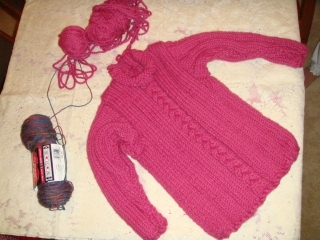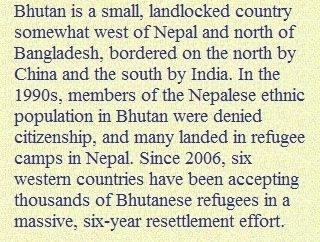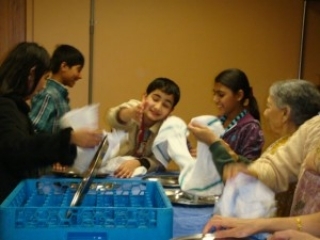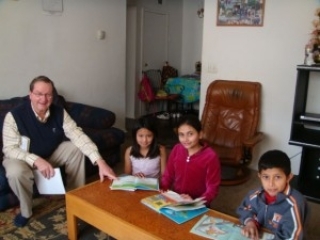
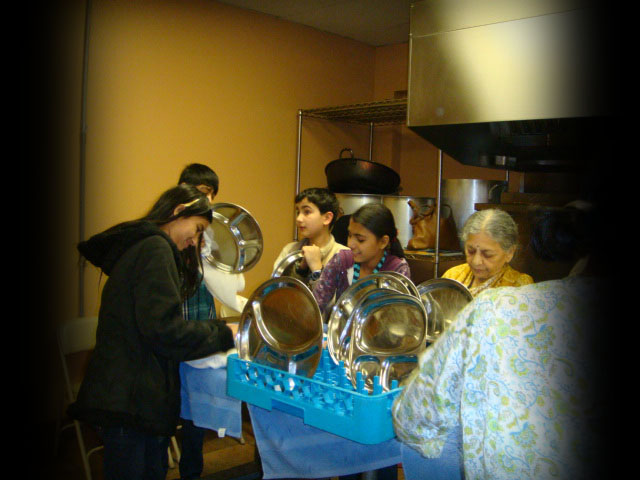
Assisting Bhutani Refugees in a New Homeland

On Maha-Shivaratri (a major Hindu holy day in February or March each year) 2009, I got a call from a fellow Sathya Sai Baba devotee who had been charged suddenly with the task of finding transportation for 50–60 Bhutani refugees to a local Maha-Shivarathri function. I agreed to provide transportation for three persons.
At the function, I learned further details of a new service project the Nashville Sathya Sai Baba Center was embarking upon – involving refugees from Bhutan who were being settled in various parts of the world, including the Nashville area, due to religious persecution in Bhutan. They had been in refugee camps in Nepal for over 15 years, and now UNHCR (the UN Refugee Agency) was resettling them worldwide. Catholic Charities and World Relief were two major organizations partnering with UNHCR in this refugee resettlement project in the USA. In Nashville, these agencies carried out the initial steps of picking up refugee families at the airport, taking them to a partially furnished apartment, getting them food stamps cards, enrolling the children in schools and adults with the state employment agency, completing their immunizations, and offering once-a-week English classes. Then, through an “adopt-a-family” program, various groups including the Nashville Sai Center got involved with assisting some of the families.
Since I live about 90 miles from Nashville area and only drove there weekly, I felt it would be hard for me to fulfill a responsibility toward an adopted family with once-a-week contact only, so I chose not to adopt a family but to stay peripheral, providing assistance as possible to the Sai group and the refugees. The Sai Center enthusiastically began supplying services such as English classes, driving lessons, distributing kitchen utensils, furniture, and clothing, assisting with job placements, and so on. But within three weeks, a shocking event took place – one of the Bhutani young men committed suicide. While the reasons remain unknown, it became evident that some of the refugees, despite the help from various agencies and groups, were feeling helpless and unable to reach out to anyone for appropriate help.
Upon hearing this news, my mother and I felt compelled to do more. We spent the next four hours preparing a detailed action plan that we felt could be undertaken to help the growing refugee community. We submitted the plan to the Sai Center and waited. Several months went by as they continued their services, but none of our suggestions were implemented.
Sometimes the Lord has a different plan in mind, and does not disappoint, for about five months later, a member of the Nashville Sri Ganesha (Hindu) Temple approached me and asked my mother and me to help as volunteers for the Bhutanese refugees, as she had heard we had some ideas. We learned that many of the earlier volunteers were no longer involved, for various personal reasons, and only two dedicated volunteers were continuing to work with the refugees as English teachers.
We begin working at “The Highlands”
Then we learned that a different game plan was to be initiated – instead of “Adopt-a-Family,” working one per family, we were to work as a team to provide services so that that every family would have equal access to all the resources collected. This instantly appealed to us; it took away the fear of total responsibility for a single family and provided a cushion of alternate workers who could fill in the gap if we were unable to fulfill our responsibilities.
On our first day as volunteers, in September 2009, my mother and I went to an apartment complex called Turtle Creek, where the Bhutani families had heretofore been housed. There we learned about a new resettlement apartment campus called The Highlands. We opted to go to The Highlands complex instead, since the Turtle Creek residents were on the “adopt-a-family” program only, and many of the refugee families there were not keeping in touch with their adopting families, sharing their problems with them, or learning the value of time-sense that is so acutely needed in the American culture. The atmosphere for proper assimilation of refugee families was not evident, and this was discouraging to the volunteers also. Thus, we preferred starting at the Highlands apartment complex, with a clean slate.
When we reached The Highlands, we sent around a message that we would like to meet with the new Bhutani refugee families. Members of about eight families quickly came in to talk with us. We asked preliminary questions about their experiences in their new homeland, in the refugee camp in Nepal, and about their current needs. We explained to them our planned effort as volunteers, went over with them a preliminary vocabulary list of 50 English words, and thus began our project. It was hard to witness so many young persons with nothing at all to do, their potential lying fallow. They had no radio, TV, or newspapers to read; no car to travel anywhere; not enough money to go shopping! Over the next few weeks, I invited many non-Sai devotee friends to assist in any capacity they felt comfortable. Eventually we had up to 17 adult and 5 student volunteers from ages 7 to 82 to assist in whatever way possible to help these refugee families get assimilated. Eventually I was placed in charge as the lead coordinator for the project, under the auspices of the Hindu temple.
Over the next three months, we celebrated Diwali, Thanksgiving, and Christmas feasts with these families. For Christmas we provided wrapped gifts for all the youngsters, and Christmas caroling, too! On the education front, a volunteer with her two children – middle- and high-schoolers – took charge of children’s math classes, while another volunteer organized the teaching of computer classes as well as the distribution of computers after uploading legally-available essential software. The joy in the words/actions of these Bhutani families shows us the sense of connection they feel with us and is a source of inner joy for us all: “We feel good when you visit us.” – “Can you not come everyday?” – waiting in the cold breeze to bid us goodbye after our weekly Sunday class – and lovingly fetching our octogenarian volunteer as she ambled in slowly with her walker from the parking lot.
A team of many faiths, working together
By January 2010, divine grace clearly indicated an affirmation of our path, as we gained even more volunteers. We felt the invisible hand of Sathya Sai Baba helping us, since our list of volunteers started becoming interfaith, much like the emblem of the Sai Baba’s with its symbols of various faiths, as persons of the Christian, Muslim, and Sikh religions began joining us on a routine or as-needed basis. Their participation conveyed the unity of all religions for a humanitarian cause, regardless of religious affiliation or nationality of origin, and it reflected Baba’s teaching, “Love all, serve all,” in action. With more volunteers joining us regularly, we accomplished a lot more than we could have otherwise.
Divinely, we always had the perfect volunteer with the necessary professional background among us when it was needed. When a clinical psychologist arrived for her first day as a volunteer, an incident had occurred at the complex requiring counseling services. Two outstanding students were on hand to manage the children’s math classes. An electrical engineer who had just relocated to Nashville from California helped change out a four-pin electrical cord on a donated dryer to a three-pin cord so as to make the dryer workable. Professionals such as a social worker, nutrition expert, and librarian also helped us to develop projects involving their expertise. A science teacher and a researcher were on hand to help direct 15 excited kids at the Adventure Science Center, which would have been impossible for just three persons otherwise.
The biggest challenge for the first ten months was in transporting the refugees, since none of them had automobiles or driver’s licenses. Many volunteers helped with transportation and cooking for 75 members of the refugee community to a summer picnic arranged at the Woodmont Hills Church of Christ – about 5 miles from the apartment complex. A grant was later obtained from the Woodmont Hills Church of Christ for a crafts project, in which we endeavored to help create a source of income for the artists in the community through handcrafts such as knitting, crochet, and jewelry-making, and setting up a web-based ordering system so that the community itself could self manage their orders.
We had started in September 2009 with 40 refugees (adults plus children), and a year later the group had grown to more than 120; most of the original households were now holding two or three jobs, and about 20% of the families had acquired vehicles and driver’s licenses. Beginning in June 2010, a church bus began transporting refugee adults to a four-hour English class each Sunday. Our main activity at the housing campus then shifted to teaching English, math, and computer skills to children. About eight children, ages 7–14, regularly attended our English class. The Sri Ganesha (Hindu) Temple offered free admission for these refugee children at their Sunday school. Four of the children attending yoga and cultural classes there also participate in a service project at the temple – wiping steel plates after the Sunday food sharing – and have endeared themselves to the community (see photos).

A touching lesson in hospitality
A personal enrichment in this project came through a lesson on hospitality. Since no one in the community had obtained a driver’s license or bought an automobile until May 2010, my mother and I used to pick up three people from the Highlands complex routinely on our way to the temple for the Gita class. After the class, we returned back to the apartment complex and tutored students in English for 2–3 hours, giving 15–20 minutes of one-on-one attention to each student. The students observed that my mother and I would have left home at 7.45 am and not return until 4.30 pm, without any break for lunch, and with perfect timing, before we wound up with our last student, the lady of the house would beckon us to the kitchen and offer us cups of warm milk with cookies and fruit. What hospitality! These people we thought we were serving, were serving and taking care of us! I learned that no matter one’s economic standing, generosity and hospitality are an expression of a sensitive, caring heart, and an instinct to share whatever one has.
As the group got larger and busier in its routine, it became harder to stay connected with the families, as the older families were becoming more independent and the newer families arriving at the complex sought advice from each other rather than connecting with us. But we trusted that the Lord has a plan for everyone, and only he creates the conditions for any of us to give or receive service from another. As time went by, the assimilation needs of the refugees lessened and the services gradually wound down, although we still donate clothes, computers, and so on to the resettled refugees.
On the whole, this service project developed into a mutually beneficial activity, with the volunteers as well as the recipients of the service enjoying a family-like bond.
In summary, the activities we undertook included:
1. Teaching English and computer classes for adults and children, math classes for children,
2. Exploring crafts, knitting, and jewelry making as possible sources of income, and obtaining a grant for this project.
3. Teaching shopping skills and American cooking recipes.
4. Setting up of a small library at the apartment complex campus.
5. Obtaining public library cards for one member per family.
6. Collecting and distributing clothing, toys, utensils, coats, blankets, furniture, appliances, bicycles, and helmets.
7. Obtaining admissions for children and driving them to Sunday classes at the local Hindu temple.
8. Collecting and distributing computers obtained from families and a corporate donor.
9. Providing visits and grant-obtained free passes to the Adventure Science Museum, trips to the Discovery House Museum, shopping malls, picnics, and so on.
10. Assisting with driver’s license written-test material.
11. Assisting with establishing educational equivalency for those interested in higher education.
12. Providing coaching for job interview skills and resume-and-cover-letter writing.
13. Providing musical instruments such as tambourines and cymbals to devotional group singers.
14. Distributing digital TV converters and fixing antennae.
15. Providing tours and orientation to Nashville.
16. Developing a blog for the Bhutani refugee community.
17. Celebrating Diwali, Thanksgiving, and Christmas holidays.
18. Distributing books and notebooks.
19. Holding of a medical clinic at the housing campus.
20. Providing rides to medical clinics, place of worship, career center, and so on.
Additional Info
See Also:
- Minneapolis MN USA - Refugee Resettlement Support
- Baltimore MD USA– Bhutanese Assistance
- Beaverton, Oregon, USA - Bhutanese Assistance
- Bhutanese Refugees in New Sailand (New Zealand)
To learn more about or join this service project, you may go to: http://us.sathyasai.org/index.html and click on the state or city in which the Sai Center project takes place. Click on “Email us for information about these Centers.” A local contact will respond to your email
Keywords
Bhutanese assistance | Nashville Sai Center | Nashville, Tennessee | USA Region 4 | Sathya Sai service projects USA | refugee resettlement | Bhutani refugees TNProject Details
Project start: 02/01/09
Project completion: 12/31/11
Stage of development:
Zone name: US. Canada, West Indies, Israel
Lat/Longitude: 36° 9' N -86° 47' W
Affiliation: Sathya Sai Center of Nashville, TN
Service category: Refugee assistance
Author: Abha Dastane-Rao
Project leader:
